The most common cardinal sins
Avoid these insidious errors
No one would accuse Joan Didion of being a grammar slouch. Yet here’s how she once described her knowledge: “Grammar is a piano I play by ear, since I seem to have been out of school the year the rules were mentioned. All I know about grammar is its infinite power.”
Most of us also sense we missed some lessons along the way. But few of us can claim Joan Didion’s ear. It can take years to master the nuances of syntax, but it doesn’t take long to learn a few critical basics. Here are seven cardinal sins, grammatical errors I see time and time again:
its v. it’s. Many of us may have learned our grade-school grammar too well. “Apostrophe s” is the sign for possession, right? So when an it owns something, we write it’s. But it’s is a contraction of it is. And contractions trump possessives. So its is the possessive, as in “I love grammar and all its idiosyncrasies.”
they v. he or she. He or she is cumbersome when you don’t know a person’s gender. We used to use the masculine he. Modern feminism made that unpalatable. But now those who resist "gender binary" concepts are confusing the matter further by preferring they as a singular pronoun. This issue is still being sorted out. Many writers trying to be maximally sensitive, end up maximally confusing things. If gender (or pronoun preference) is unknown, your best choice is to make the antecedent plural and use they. (Instead of “a person must speak his or her mind,” write “people must speak their minds.” Or pick he in some instances, she in others. Or do the detective work to find out more about the person. Specificity is always best, and if a person prefers they, work that preference into the context. Usage here is in flux; personally, I wish we'd invent an altogether new non-binary singular pronoun and let they remain the third-person plural.
between you and I. Between is a preposition, and prepositions must be followed by objects. This means that the pronoun here must be me not I. Between you and me is correct.
who v. whom. Who is the pronoun we use for the subject of a sentence, as in “Who called?” Whom is the pronoun we use for the object of a sentence, as in “You called whom?”
good v. well. How many times have you heard a sentence like “This car runs good”? Get this straight: Good is an adjective; it modifies a noun. Well is an adverb; it modifies a verb, adjective, or other adverb. When a chef cooks well, a good steak is the result. When a writer writes well, the prose is good.
fewer v. less. When you see a grocery store sign reading “12 items or fewer,” congratulate the manager. Fewer is the correct adjective when the noun it modifies is a plural comprising multiple units. Less is the correct adjective when the noun it modifies is something that is a mass, or an idea, rather than a number of units. Nonfat milk has fewer calories than whole milk; we should have less Coke in our diet than milk.
lay v. lie. Learn this to stay a step ahead of most writers and editors. Lay is a transitive verb. It must have an object to complete its meaning: A chicken lays eggs. Lie is an intransitive verb. It needs no object to make sense: The dog lies down. (Down is an adverb.)
All of us commit these sins—it’s hard not to when we keep hearing the wrong thing. But let a red flag pop up every time you use one of these terms. Stop and walk through the grammar. Then relax and have fun writing.
—Constance Hale
| |
Share This:





